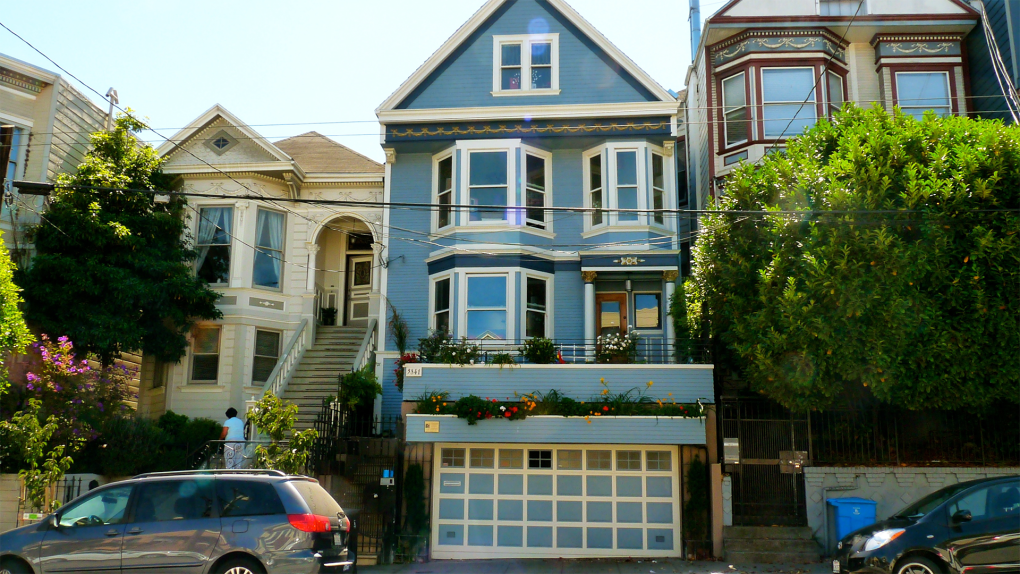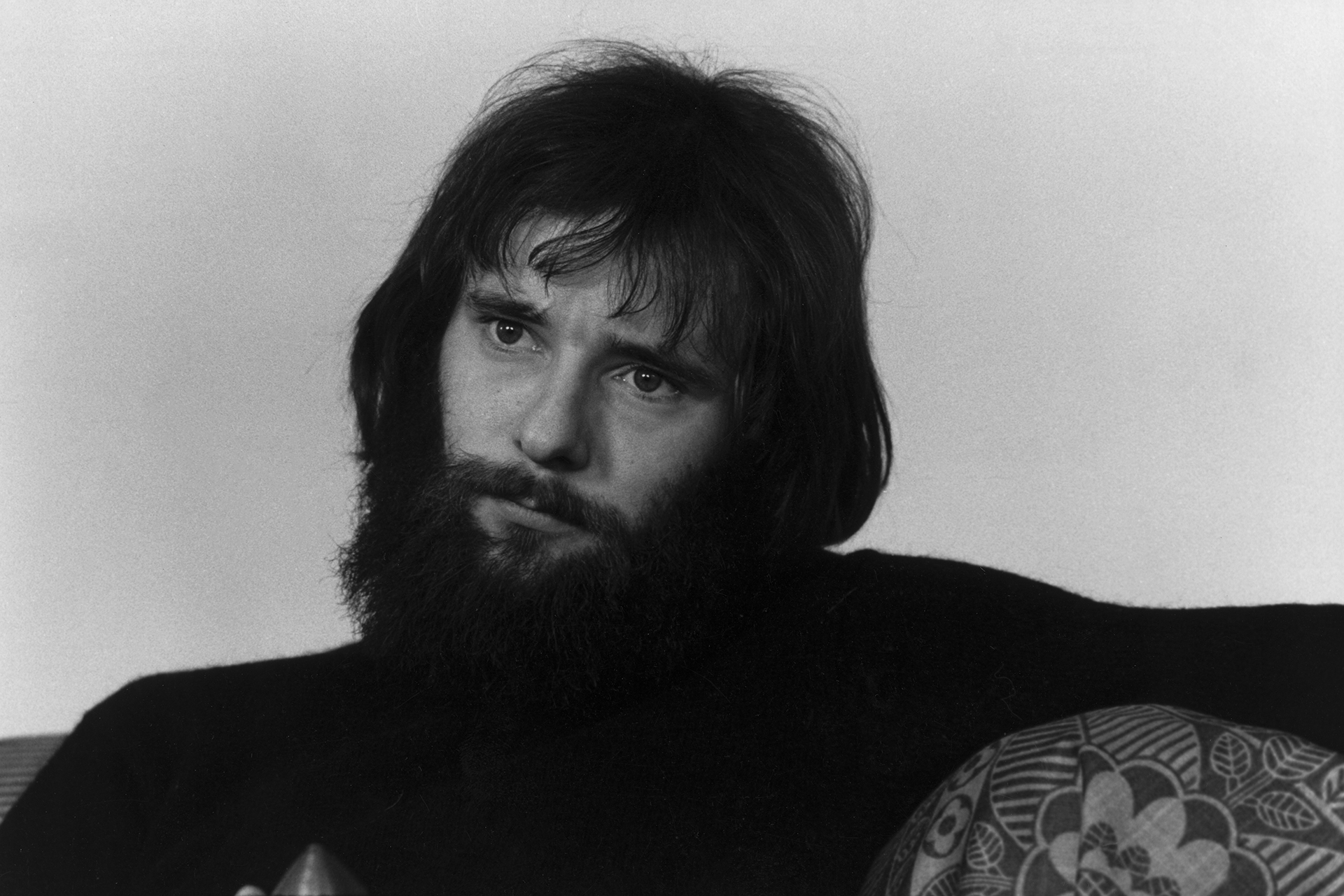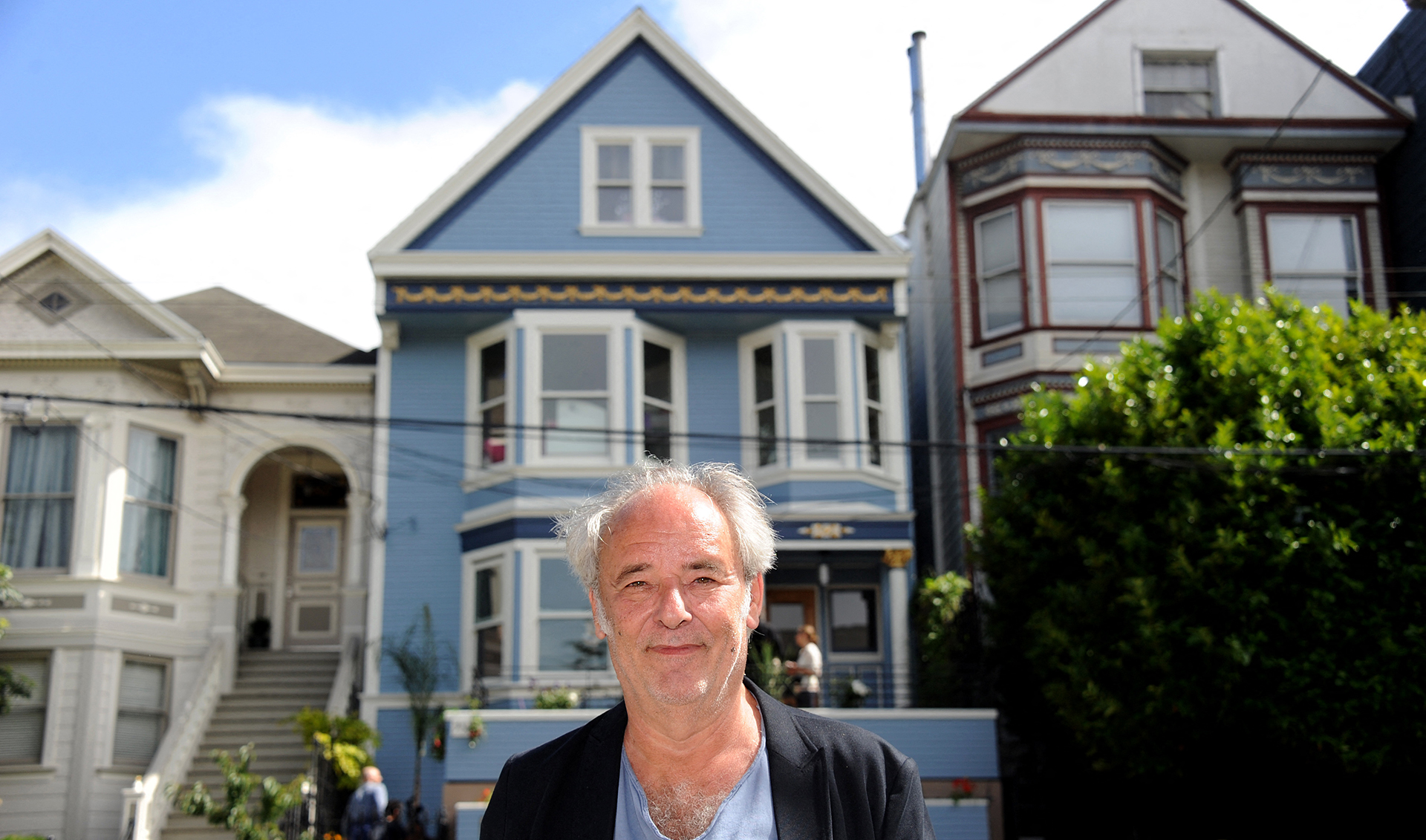Episode Transcript
This is a computer-generated transcript. While our team has reviewed it, there may be errors.
Olivia Allen-Price: I’m Olivia Allen-Price, host of Bay Curious. One thing I love about living in the San Francisco Bay Area is getting to meet people from all over the world who travel here for vacation. They give me perspective. I may have seen the Golden Gate Bridge a thousand times by now, but knowing other people pay good money to hop on a plane and come see it? I don’t know, it helps me maintain some reverence. Stoke my sense of wonder…
[A pop of street sound]
Olivia Allen-Price: But sometimes the tourists know something that I don’t. They’ve come to see something I never knew was there. Which brings me to one Castro landmark that few people know anything about…Unless you’re French, that is.
Sylvie Walters: La fameuse Maison Bleue.
Olivia Allen-Price: The famous Blue House.
Sylvie Walters: Tous les Français connaissent la Maison Bleue et tous les Français veulent voir la Maison Bleue.
Olivia Allen-Price: That’s San Francisco-based French tour guide Sylvie Walters. She says “All the French know the Blue House and all the French want to see the Blue House.” Take a stroll by 3841 18th Street in San Francisco and you’ll spot it … a pastel-blue Victorian that, while lovely, looks like many others that line the street—Except there’s a throng of French tourists outside.
Today on the show: What makes the privately-owned Blue House in The Castro such a magnet for people from France?
[Theme Music plays]
Olivia Allen-Price: Listener Helen Walker, who’s based in Berkeley, asked us if we could share the story of the Blue House.
Helen Walker: I took twelve years of French and it was my major in college. And I love going to France.
Olivia Allen-Price: Helen has lived in the Bay Area for decades. But she says the first she’d ever heard of this famous site of French pilgrimage was a few years ago, when her daughter’s twenty-something friend came to visit from Grenoble, France.
Helen Walker: And he said, “Before I leave, I have to go see the Blue House.” And I’m like, “The Blue House? What are you talking about?”
Olivia Allen-Price: The answer to this question seemed like something NPR Culture Correspondent Chloe Veltman might know. She’s half French. And she’s been living in San Francisco for more than twenty years. Hey Chloe.
Chloe Veltman: Bonjour Olivia.
Olivia Allen-Price: What I didn’t know when I approached you about doing this story was your personal connection to it.
Chloe Veltman: That’s right, Olivia. So, my connection to the Blue House…stems from a song.
[Guitar intro to “San Francisco” by Maxime le Forestier]
Chloe Veltman: The song is called “San Francisco.” And it’s by French singer-songwriter Maxime Le Forestier. He wrote the track in 1971 after staying at the Blue House, in San Francisco’s Castro District, that summer.
[Opening verse of “San Francisco” up and in the clear: “C’est une maison bleue, Adossée à la colline. On y vient à pied, on ne frappe pas. Ceux qui vivent là, ont jeté la clé…”]
Chloe Veltman: Maxime Le Forestier’s “San Francisco” was a big part of my childhood. The track was in my mom’s record collection. She’s from Paris. I couldn’t stop listening to this song as a kid. I kept putting it on mixtapes and playlists long after I moved out of my parents’ house. I was, and still am, entranced by the dusky, modal harmonies and the plaintiff guitar riff that sounds almost like a cowboy tune.
[Chorus from the song up and in the clear: “…Quand San Francisco s’embrume, Quand San Francisco s’allume, San Francisco, où êtes vous ? Liza et Luc, Sylvia, attendez-moi…” Olivia Allen-Price: I see what you mean…It has a Wild-West high-lonesome quality to it. Chloe Veltman: Yeah, and this song made San Francisco seem like a magical place to me—a place I couldn’t even imagine visiting as I was growing up in stodgy, straight-laced England, let alone calling home now for almost a quarter of a century. It’s fair to say “San Francisco” inspired me to move to San Francisco. Olivia Allen-Price: It’s a really pretty song. I can see why it lured you here. Tell us more about it. Chloe Veltman: Sure! Well, “San Francisco” appeared on le Forestier’s first solo studio album, Mon Frère, and quickly became the singer-songwriter’s first hit. He went on to become a major star in France. [Maxime le Forestier singing the opening lines of “San Francisco”, up and in the clear: “…C’est une maison bleue / Adossée à la colline / On y vient à pied / On ne frappe pas/ Ceux qui vivent là / Ont jeté la clé…”]
Chloe Veltman: In the first verse, the singer describes a blue house that backs onto a hill. You walk up, don’t bother knocking because the people who live there threw out the key. This is the perfect introduction to daily life at the Blue House: It was a hippie commune at the time, mostly inhabited by a bunch of young and idealistic LGBTQ artists and activists.
Le Forestier goes on to describe the happy-go-lucky, communal atmosphere at the house. People are reunited there after years on the road. He also sings about a daily ritual at the blue house — where everyone sits down to eat a meal together at five o’clock in the evening.
Phil Polizatto: We had no rules whatsoever.
Chloe Veltman: That’s Phil Polizatto.
Phil Polizatto: The only rule we had was that at 5:00 p.m. everybody had to be sitting on the floor for dinner.
Chloe Veltman: Phil lived in the Blue House in the 1970s and is the author of a book about it that’s also been translated into French.
Phil actually gets namechecked in Le Forestier’s song.
[Verse from “San Francisco” mentioning Phil up and in the clear: “…Nageant dans le brouillard, Enlacés, roulant dans l’herbe, On écoutera Tom à la guitare, Phil à la quena, jusqu’à la nuit noire…” then duck under and out.]
Chloe Veltman: He’s singing: “Swimming in the fog, rolling in the grass entwined, we’ll listen to Tom on the guitar, Phil on the quena, long into the night.” Just in case you’re wondering, the quena is an ancient flute from the Central Andes.
[Burst of quena music]
Chloe Veltman: Anyway, Phil says the commune that lived at 3841 18th Street back then went by the name Hunga Dunga. It was part of a network of hippie houses around the city, like the Golden Aura Commune and the Friends of Perfection. Phil says they all operated on a barter system.
Phil Polizatto: We delivered food to around fourteen communes for free.
Chloe Veltman: And when they weren’t busy pushing back against capitalism, Phil says the Hunga Dungas basically did a lot of drugs and had a lot of sex. People came and went. It was a bit of a free for all.
Phil Polizatto: We just were a bunch of freaks who wound up living together in this big house.
Chloe Veltman: Phil says one of the roommates, a Belgian guy named Luc, invited Maxime le Forestier and his sister Catherine to stay at the house while they were traveling around the U.S. No one in the house…besides Luc…had much of an idea that the Le Forestier siblings were starting to make a name for themselves as musicians in their native France when they came to San Francisco in 1971. Phil says the Hunga Dungas didn’t think much of the young Frenchman.
Phil Polizatto: He was like a lamp. He didn’t do anything. He didn’t do the dishes. He didn’t vacuum the floor. He just sat in that chair with his guitar, strumming a little bit. And of course, my immediate impression was, “Wow, what a slouch.”
Chloe Veltman: After a few weeks, the Le Forestiers moved on. Then, about a year later, Phil says the Hunga Dungas received a record in the mail.
Phil Polizatto: And we opened it up and it was Maxim’s first album. And you know what? We put it in the bookcase and no one ever played it.
Chloe Veltman: It wasn’t until months later that roommate Luc suggested they give the album a listen. The thing is, no one who lived in the house realized that that record was such a smash in France…it sold over one million copies…and that “San Francisco” was its most famous song.
[“San Francisco” plays again]
Phil Polizatto: And when we heard the song “San Francisco,” we were just simply blown away. I mean, what nicer thank you note could one be given than that song.
[Song fades out]
Chloe Veltman: The community dissolved in the mid-1970s. Many of its members, including Phil, moved out of town. For decades, barely anyone in San Francisco knew the significance of the Blue House. At some point, it was painted green. It wasn’t until just over a decade ago that an enterprising journalist rediscovered the house and its story. The French consulate here in San Francisco petitioned the owners to repaint the façade blue. They did, and today there’s also a commemorative plaque outside with the singer’s face on it.
[Sounds of people on a street]
Cathy Colonges: Tout le monde a un souvenir autour de cette chanson, de l’endroit où on l’a appris.
Chloe Veltman: That’s Cathy Colonges. She’s a visitor from the South of France I meet on a group tour of the neighborhood. As we stand outside the Blue House, Cathy says the song is so well known in her home country, many people can remember how they first came across it.
Cathy Colonges: J’ai appris cette chanson avec une de mes cousines qui était un peu plus âgé que nous, qui nous la chanter et qui nous a fait aussi connaître Maxime Le Forestier.
Chloe Veltman: In Cathy’s case, she learned to sing it as a kid from an older cousin, who also introduced her to more songs by Maxime Le Forestier. At that point, other random French people start to appear in front of the house. Our tour guide, Sylvie Walters, invites them to join us.
[Greetings exchanged “…Vous venez voir la maison bleue?” “Voilà, je savais même pas qu’elle était par là…”]
Chloe Veltman: People exchange stories about how they know the song.
Person 1: On a tous chanté quand on avait quinze ans autour d’un feu, le soir, pendant les vacances, en été…
Chloe Veltman: One person says she sang it when she was fifteen years old at night around the fire on vacation.
Person 2: Mes parents la mettaient de temps en temps dans la voiture, mais…
Chloe Veltman: Another says her parents put “San Francisco” on in the car from time to time.
[“ Un, deux, trois…”]
Chloe Veltman: Before going our separate ways, we sing the song right there on 18th Street, in front of the house that inspired it.
[People singing: “… C’est une maison bleue adossée à la colline. On y vient à pied, on ne frappe pas ceux qui vivent là etc…” Transitions into Maxime Le Forestier singing “San Francisco”…]
Olivia Allen-Price: That was reporter Chloe Veltman…etc
We shot a TikTok and Instagram video for this story, so if you want to see the house for yourself, check KQED’s accounts… We’re @KQED.
If you are new to Bay Curious – Bonjour! WELCOME! We are so glad you’re here. Be sure to subscribe to the podcast wherever you listen so you don’t miss a future episode. If you dig our show, we’d also love if you left us a rating or review wherever you listen. Subscription numbers and ratings really help us out – so thanks for chippin in!
Bay Curious is made in San Francisco at member-supported KQED.
The show is produced by Amanda Font, Christopher Beale and me, Olivia Allen-Price. Additional support from Jen Chien, Katie Sprenger, Cesar Saldana and Holly Kernan.
I hope you have a wonderful week! Au revoir!




